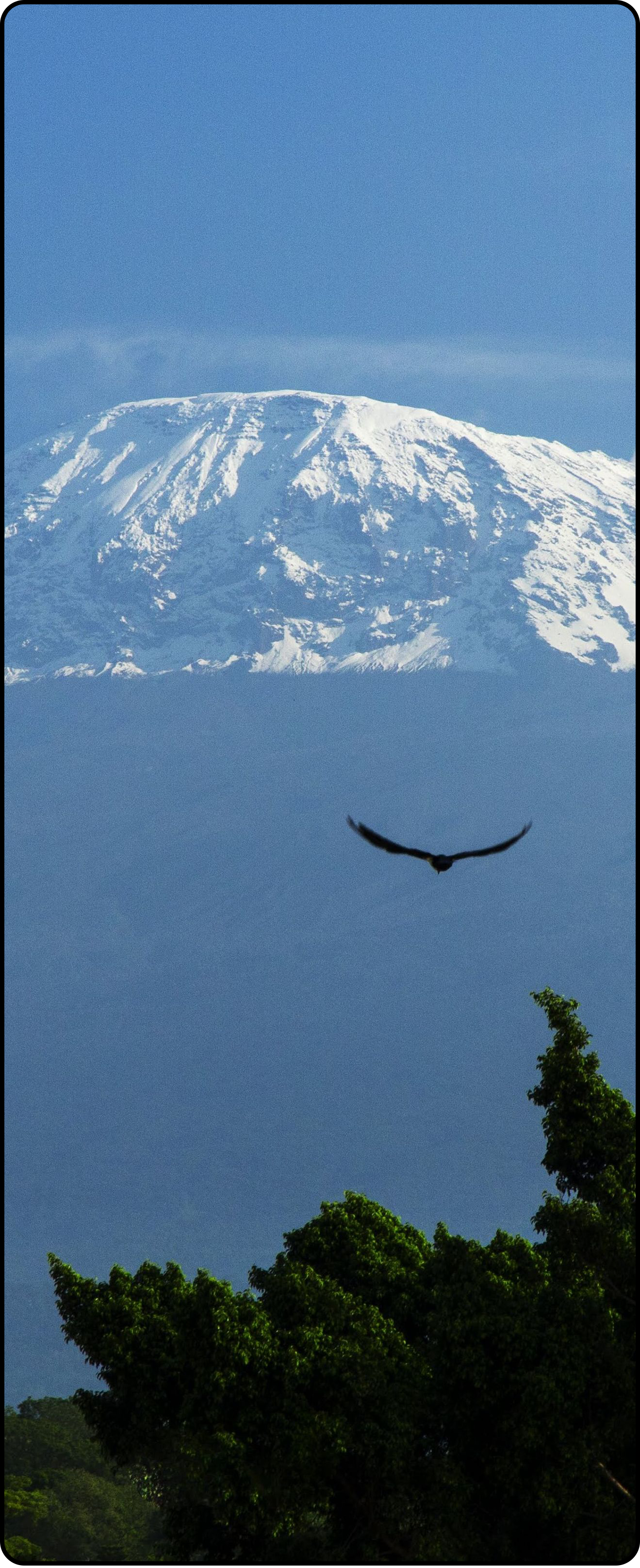Mountain climbing...
![]()
![]()
GENERAL INFORMATION :
There is no special equipment or expertise needed to ascend Mt. Kilimanjaro - the basic thing is having a slow pace. The routes have been chosen to allow a slow gradual hike. Any physically fit person is able to trek Mt. Kilimanjaro. However, please note the following - you are not permitted to trek the mountain if you have any respiratory problems, cold, high / Low Blood pressure, diabetics or any cardiac problem. Mt. Kilimanjaro is a big mountain and should not be under estimated.
CHECKLIST OF RECOMMENDED ITEMS :
Waterproof Rucksack and Daypack, Sleeping bag (at least 3 seasons), Water purifying tablets, Insulation pad, Boots and light walking shoes, Balaclava and Woollen hat or Scarf, Snow goggles / Sun glasses, Gaiters, Gloves, Sweaters / Jumpers Pants and Jackets (waterproof), Water bottle, Anorak / raincoat, Several pairs of socks, First aid kit and insect repellent Sun protection cream and Lip salve, Personal toiletry requirements, Flash light with spare batteries, Whistle and some plastic Bags, Walking stick / Ski-pol.
ACCOMMODATION AND FOOD :
The accommodation is in good huts, either dormitory or smaller four bed A-frames. The lower huts have spacious dining rooms, where you will be served meals cooked by your guide. All food and kitchen equipment will be carried by the porters and cooked by an experienced cook. It will be plentiful and wholesome, but may be limited by the circumstances. Beer and soft drinks are available at the huts. Your own supply of chocolate and high energy snacks is a good idea.
Water is available at several points and should be purified before drinking. All water at the huts will be boiled and some provided for drinking the next day. A comforting tip is to fill your bottle in the evening with boiled water for the next day, and to use it as a hot water bottle overnight. There are water points between the huts – check with your guide.
ACCLIMATIZATION :
Acclimatization is extremely important, both to let you enjoy your ascent but more importantly to avoid any serious complications. The route is planned to optimize the height gain, but you may still get a head ache or feel nauseous. There are two important preventative measures: to drink copiously, even when it is really difficult, and to walk very slowly, avoiding as far as possible increased heart and breathing rates.


 English
English  Français
Français 



